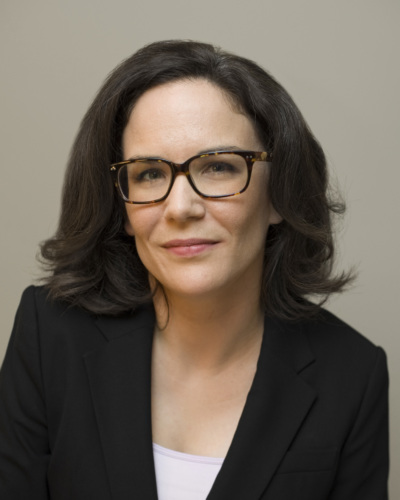
Press Release
Hidden Inequities: Intersectional Study Uncovers Stark Disparities in Substance Use Treatment Completion Among Women of Color
-
Focus Areas
Alcohol, Tobacco, Drugs & Mental Health, Health Care & Population Health, Women, Youth & Children -
Issues
Alcohol -
Expertise
Research – Quantitative -
Programs
Alcohol Research Group

New research is the first to use an intersectional approach to examine disparities in the completion of alcohol treatment, finds striking gender and race-based inequities
(Emeryville, CA) Completion rates for alcohol treatment are significantly lower for racially and ethnically minoritized women compared to White men, according to a new study led by scientists at the Alcohol Research Group’s (ARG) National Alcohol Research Center, a program of the Public Health Institute, in collaboration with RTI International.
The study, published today in Alcoholism: Clinical and Experimental Research, sought to measure disparities in treatment completion more precisely by using an intersectional approach that examined race, gender, and ethnicity together and compared the results when measured by race and ethnicity alone and gender alone.
When examining race and gender disparities separately, results were consistent with previous studies. The findings showed lower completion rates among Black, Hispanic/Latinx, and American Indian and Alaska Native (AIAN) adults compared to White individuals and found a modest disparity for women when compared to men.
However, when using an intersectional approach that examines groups defined jointly by race, ethnicity, and gender, the findings showed a much broader range of disparities, particularly for minoritized women.
- When compared to White men, Black, Hispanic/Latinx, AIAN, and Asian American and Pacific Islander (AAPI) women had treatment completion rates that were 12.4, 9.1, 10.3, and 4.8 percentage points lower, respectively.
- Compared to White men, disparities in treatment completion were twice as large for Black women than Black men (12.4% vs. 5.9%), five times larger for Hispanic/Latina women than Hispanic/Latino men (9.1% vs. 1.8%), and almost twice as large for AIAN women than AIAN men (10.3% vs. 6.0%).
- Race-only and gender-only models showed higher completion rates for AAPI adults, whereas the intersectional analysis revealed that this was only true for AAPI men, and that there was a disparity for AAPI women.
“In the US, 40% of adults in treatment for an alcohol use disorder do not end up finishing treatment. So, it is critical to have a more nuanced understanding of who is ending their treatment early to prevent certain groups from being left behind,” said lead author and Research Associate Joanne Delk. “By analyzing treatment completion through an intersectionality lens, we were able to identify multiple inequities that were hidden in previous research.”
In their analysis, the researchers adjusted for variations in the severity of need for treatment across groups and found that this did not explain the disparities.

There are many unique challenges and barriers to treatment faced by women of color, such as limited treatment access, childcare, discrimination, job flexibility, and lack of culturally tailored services. And many of the inequities identified in our intersectional analysis might stem from sociopolitical factors.Joanne Delk
ARG Research Associate & Lead Study Author
The research team calls for greater attention to targeted, multi-level interventions to address disparities and increase equity in outpatient treatment completion.
“The completion of specialty alcohol treatment is often an important step affecting long-term recovery, and it is disheartening to find such high levels of disparities among women of color. We hope our findings can inform future alcohol-related care and better support long-term recovery for everyone.”
Researchers used data from the Substance Abuse and Mental Health Services Administration’s 2017 to 2019 Treatment Episode Data Set-Discharges (TEDS-D). The sample contained three years of discharge records from publicly funded treatment facilities in the United States, with over a half million records (n=559,447) from adults aged 18 and older.
Read the full study: “Intersectional disparities in outpatient alcohol treatment completion by gender and race and ethnicity” by Joanne Delk, Kara Bensley, Yu Ye, Meenakshi S. Subbaraman, Aryn Z. Phillips, Katherine J. Karriker-Jaffe, and Nina Mulia.
About the Alcohol Research Group
For over 60 years, the Alcohol Research Group (ARG) has been actively engaged in critically needed alcohol and other drug-related public health research. We study drinking and other drug use and how these and other factors such as gender, race/ethnicity, sexual identity, socioeconomic disparities, and environmental differences affect health. ARG is also home to the NIAAA-funded National Alcohol Research Center and training program. Visit arg.org.
ARG is a program of the Public Health Institute, an independent nonprofit organization, dedicated to promoting health, well-being, and quality of life for people throughout California, across the nation and around the world. Visit phi.org.
About RTI International
RTI International is an independent, nonprofit research institute dedicated to improving the human condition. Clients rely on us to answer questions that demand an objective and multidisciplinary approach — one that integrates expertise across the social and laboratory sciences, engineering and international development. We believe in the promise of science, and we are inspired every day to deliver on that promise for the good of people, communities and businesses around the world. For more information, visit www.rti.org.
More Updates
Work With Us
You change the world. We do the rest. Explore fiscal sponsorship at PHI.
Support Us
Together, we can accelerate our response to public health’s most critical issues.
Find Employment
Begin your career at the Public Health Institute.



